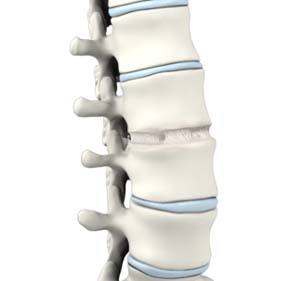
What is Anterior Lumbar Interbody Fusion?
Anterior lumbar interbody fusion (ALIF) is a surgery performed to correct spinal problems in the lower back. The surgery can be implemented either as an open surgery or minimally invasive technique.
Indications for Anterior Lumbar Interbody Fusion
The common indications for ALIF include:
- Severe lumbar (low back) or leg pain that is unresponsive to non-surgical treatment
- Degenerative disc disorder of the lumbar spine (pain due to damaged disc)
- Spondylolisthesis (slippage of one vertebra over another)
- Scoliosis (S-shaped curve of the spine)
- Fractures of the spine
- Tumors
- Spinal instability
Anterior Lumbar Interbody Fusion Procedure
- ALIF surgery is usually performed under general anesthesia. You will be positioned supine (lying on the back).
- Your surgeon makes an incision on your abdomen and retracts the muscles and various structures to enhance the clarity and accessibility to the anterior aspect of the vertebrae.
- The surgical approach is from the front of the vertebral body in the lower back region.
- Your surgeon removes the whole or a part of the damaged disc between two adjacent vertebrae followed by fusion of the same with or without the use of bone grafts.
- External implant materials such as rods, screws, plates, and wires may be fixed to the treated vertebrae to deliver extra support and stability during the healing process.
- At the end of the procedure, the structures are re-approximated, and the skin is closed with sutures.
Recovery of Anterior Lumbar Interbody Fusion
- The post-surgical hospitalization includes the rehabilitation program. If required, your surgeon may prescribe pain medications or a brace and follow-up physical therapy upon discharge.
- The recovery period after ALIF surgery depends on your body’s healing capacity. The success of surgery depends on various factors such as age, spinal condition, overall health status and activity level of the individual.
- The period of your rest or inactivity depends on a few factors such as the type of surgical procedure and the approach used to access your spine, the size of the incision and presence of any complications.
- Return to work or normal activity depends on the type of work or activity you plan to perform. Usually, 3 to 6 weeks is the ideal time of healing. With the advanced and innovative techniques, it is now possible to achieve improved fusion rates, shorter hospital stay with an active and rapid recovery period.
- Strictly adhere to the postoperative instructions suggested by your spine surgeon to promote healing and reduce the possibility of postoperative complications.
Risks or Complications of Anterior Lumbar Interbody Fusion
The complications of the ALIF surgery include infection, nerve damage, blood clots or blood loss, bowel and bladder problems and any problem associated with anesthesia. The underlying risk of spinal fusion surgery is the failure of fusion of vertebral bone and bone graft, which usually requires additional surgery.















